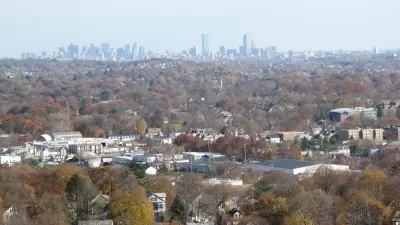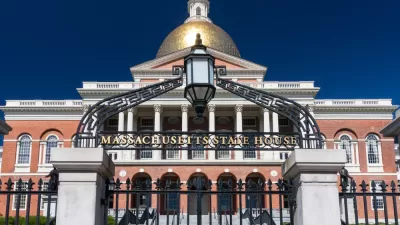More details on the state of Massachusetts' game changing "Housing Choice" program are now available.

The Metropolitan Area Planning Council (MAPC) in December 2021 announced new draft guidelines for zoning changes intended to spur multi-family development near transit routes, as mandated by a state law adopted earlier in 2021.
According to an MAPC statement published on Wednesday, the state required zoning changes affects MBTA communities, defined as cities or towns with MBTA service. In all, 175 such communities are subject to the law.
Enacted as part of the economic development bill in January 2021, new Section 3A of M.G.L. c. 40A (the Zoning Act) requires that an MBTA community shall have at least one zoning district of reasonable size in which multi-family housing is permitted as of right and meets other criteria set forth in the statute.
The criteria for multi-family housing in the required zoning districts, as defined in the draft guidelines, are defined as follows:
- Minimum gross density of 15 units per acre
- Not more than ½ miles from a commuter rail station, subway station, ferry terminal or bus station, if applicable.
- No age restrictions
- Suitable for families with children.
"The new requirement is more than just housing policy. With strong and feasible guidance, Section 3A, a new section of MGL c. 40A – the Zoning Act, could deliver transformational transportation, equity, and climate benefits for our region," according to the statement.
The required zoning changes are included in the "Housing Choice" program included in the January 2021 economic development bill. For more background on the Housing Choice program see earlier Planetizen coverage.
FULL STORY: MBTA Communities Multifamily Zoning Requirement

Alabama: Trump Terminates Settlements for Black Communities Harmed By Raw Sewage
Trump deemed the landmark civil rights agreement “illegal DEI and environmental justice policy.”

Planetizen Federal Action Tracker
A weekly monitor of how Trump’s orders and actions are impacting planners and planning in America.

Why Should We Subsidize Public Transportation?
Many public transit agencies face financial stress due to rising costs, declining fare revenue, and declining subsidies. Transit advocates must provide a strong business case for increasing public transit funding.

Understanding Road Diets
An explainer from Momentum highlights the advantages of reducing vehicle lanes in favor of more bike, transit, and pedestrian infrastructure.

New California Law Regulates Warehouse Pollution
A new law tightens building and emissions regulations for large distribution warehouses to mitigate air pollution and traffic in surrounding communities.

Phoenix Announces Opening Date for Light Rail Extension
The South Central extension will connect South Phoenix to downtown and other major hubs starting on June 7.
Urban Design for Planners 1: Software Tools
This six-course series explores essential urban design concepts using open source software and equips planners with the tools they need to participate fully in the urban design process.
Planning for Universal Design
Learn the tools for implementing Universal Design in planning regulations.
Caltrans
Smith Gee Studio
Institute for Housing and Urban Development Studies (IHS)
City of Grandview
Harvard GSD Executive Education
Toledo-Lucas County Plan Commissions
Salt Lake City
NYU Wagner Graduate School of Public Service





























